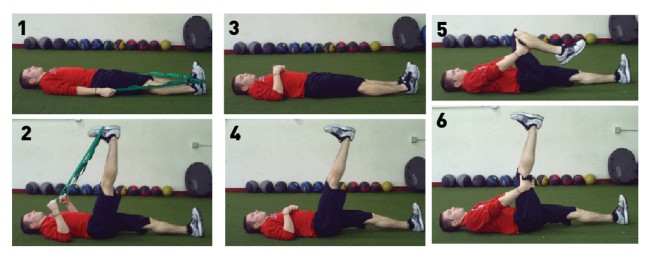Have you ever had that pain in the back of your leg while running down the field or court? Do you still wonder why you can’t touch your toes? The hamstrings play an important role in running and can be easily injured if not flexible.
Tight hamstrings can lead to low back and knee pain as well. The primary function of the hamstrings is to extend the hip and flex the knee. This group of muscles is comprised of the biceps femoris, semimembranosus and semitendinosus. While running, the hamstrings extend the hip during the ground phase moving the body forward. As the heel strikes the ground, it must lengthen to load the leg and prepare it for acceleration. Therefore, flexible muscles are able to produce more force and prevent injuries.
There are three different types of stretches included in this article. Two are active stretches that utilize the reciprocal inhibition principle and the third is an active assistive stretch. The active stretches involve contracting the opposing muscles; in this case, the quadriceps and hip flexors. When the opposing muscles contract, they inhibit the contraction of the primary muscle (hamstrings), allowing them to stretch more effectively. The active assistive stretch is the same as the active one, except an additional force is exerted by the stretcher to increase the intensity of the stretch.
In the active stretch, the stretcher pushes one heel into the ground, while raising the other with the knee fully extended. In the active assistive version, an additional force is needed to enhance the stretch and is accomplished by pulling on a stretch-strap or towel. The active knee extension stretch begins by lying down with the thigh perpendicular to the floor and the knee flexed. Extend the knee to stretch the hamstrings. For all exercises, hold the stretch for three to five seconds and repeat five to 10 times on each side.
When stretching, move to a point of resistance and slightly beyond. Stretching should not be painful. These exercises can be performed daily and should also be used before and after activity such as practices, training, and strength workouts. Don’t procrastinate. Start getting more flexible today!
 High School Illustrated High School Sports Magazine
High School Illustrated High School Sports Magazine

